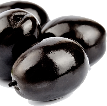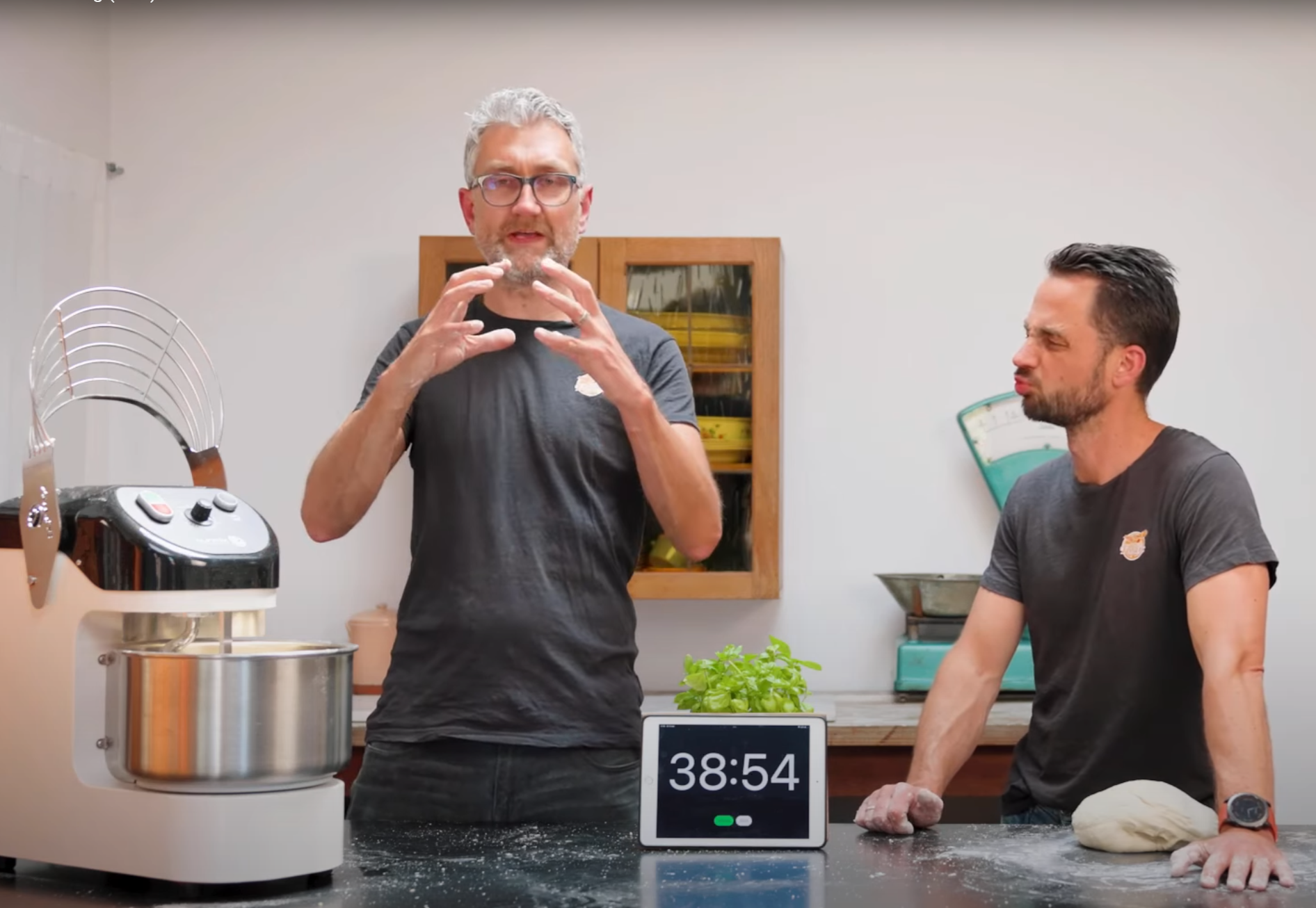







11/07/2025
[VIDEO] Let's overknead our pizza dough!

Written by
Perfect Pizza Flours
 4136 x views
4136 x views
The main goal of kneading dough is to build your gluten network. This gluten development begins as soon as you bring your flour (or meal) into contact with water. Then, by kneading, you strengthen the gluten network.
If you knead for a very short time, your dough will have low gluten development. Your dough will then look very coarse, somewhat resembling the texture of cauliflower. If you try to stretch your dough at this stage, you'll notice that it tears almost immediately. It still lacks cohesion.
If you knead a little longer, you'll automatically reach medium gluten development. Your dough will then become more supple and elastic, and less sticky. You can also stretch the dough a bit further, although it will still tear quite easily. But less quickly than with low gluten development.
If you knead even longer, you'll eventually reach full gluten development. Your dough will then be soft, supple, and elastic. It stretches easily without tearing.
For the dough in this video, we used a medium-strength flour with a W-value of 260/280. The hydration is 60%, both for Stefan's dough in the machine and Elkin's dough kneaded by hand. We added 2% salt to the dough (fun fact: salt strengthens the gluten network) and used 0.2% dry yeast.
If you knead for a very short time, your dough will have low gluten development. Your dough will then look very coarse, somewhat resembling the texture of cauliflower. If you try to stretch your dough at this stage, you'll notice that it tears almost immediately. It still lacks cohesion.
If you knead a little longer, you'll automatically reach medium gluten development. Your dough will then become more supple and elastic, and less sticky. You can also stretch the dough a bit further, although it will still tear quite easily. But less quickly than with low gluten development.
If you knead even longer, you'll eventually reach full gluten development. Your dough will then be soft, supple, and elastic. It stretches easily without tearing.
For the dough in this video, we used a medium-strength flour with a W-value of 260/280. The hydration is 60%, both for Stefan's dough in the machine and Elkin's dough kneaded by hand. We added 2% salt to the dough (fun fact: salt strengthens the gluten network) and used 0.2% dry yeast.
If you watched our video, you'll have seen that dough in the dough machine eventually reaches a turning point. Instead of becoming firmer and less sticky, the dough becomes stickier and less firm again. This phase takes quite a while. So the dough certainly isn't overkneaded overnight. It's a more gradual process in which the dough gradually loses structure and becomes less firm.
At the end of our 60-minute kneading time, we had a somewhat soft dough in the machine. We were very curious to see how this dough would perform.
We removed it from the machine, covered it, and let it rise overnight in bulk. The next day, to our surprise, the dough had risen considerably. We had expected that overkneading would damage the gluten structure to the point of making the dough unusable. That was certainly not the case.
In fact, Elkin baked pizza with all the overkneaded dough the day after filming this video. Both the dough we kneaded by machine and the dough we kneaded by hand turned out surprisingly well in both cases. The dough didn't tear and was still perfectly workable. There wasn't a significant difference between the two batches either.
Our tentative conclusion: time has a significant impact on dough, in a positive sense. Our dough seemed to have recovered nicely from our kneading marathon during the rising phase.
At the end of our 60-minute kneading time, we had a somewhat soft dough in the machine. We were very curious to see how this dough would perform.
We removed it from the machine, covered it, and let it rise overnight in bulk. The next day, to our surprise, the dough had risen considerably. We had expected that overkneading would damage the gluten structure to the point of making the dough unusable. That was certainly not the case.
In fact, Elkin baked pizza with all the overkneaded dough the day after filming this video. Both the dough we kneaded by machine and the dough we kneaded by hand turned out surprisingly well in both cases. The dough didn't tear and was still perfectly workable. There wasn't a significant difference between the two batches either.
Our tentative conclusion: time has a significant impact on dough, in a positive sense. Our dough seemed to have recovered nicely from our kneading marathon during the rising phase.




 0
0